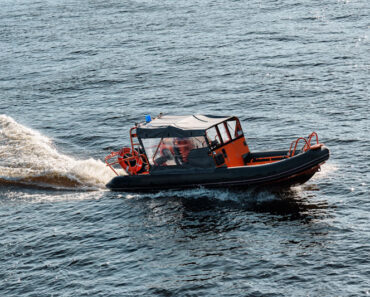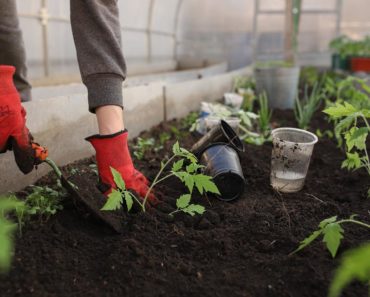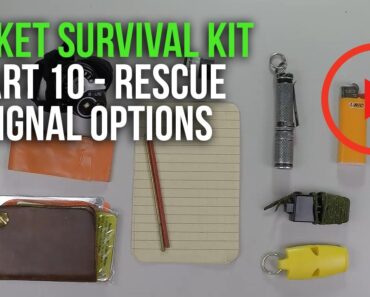In the event of a significant and prolonged grid-down scenario, the need to adopt extraordinary measures to ensure personal safety becomes paramount. Whether putting your contingency plans into action, strategically evacuating to mitigate risks, or implementing security protocols, the emergency may demand resorting to extreme measures for self-preservation.
Central to safeguarding oneself is the imperative to steer clear of locations filled with danger during and after apocalyptic events. The initial chaos and lingering hazards in specific areas mandate a deliberate decision to completely circumvent them.
While some of the choices listed in this article may appear obvious, there exists a deliberate rationale behind my recommendation to avoid these places both during and after an SHTF situation. From my perspective, the potential risks associated with these areas far outweigh any conceivable rewards.
So, here are the places you should stay away from when the brown stuff hits the fan:
City centers and major urban areas
Folks must exercise extreme caution in steering clear of city centers and major urban areas when anticipating challenging situations. The heightened risk of chaos and violence in these environments during a crisis amplifies the need for strategic avoidance.
The densely populated nature of urban centers increases the difficulty of navigating through potentially dangerous scenarios. Preppers may find it challenging to secure essential supplies without exposing themselves to unnecessary risks such as civil unrest, scarcity of resources, and a surge in criminal activities.
The potential for significant civil unrest is a major factor, as desperate individuals may resort to violence and looting, putting personal safety at risk. The scarcity of resources in urban environments during a crisis could exacerbate tensions and lead to unpredictable situations. Navigating through crowded streets and managing potential confrontations becomes a precarious undertaking for most folks out there.
Additionally, the reliance on centralized services and infrastructure in urban areas may render these locations more susceptible to disruptions. Essential services such as electricity, water, and communication networks may experience outages, further complicating the situation. Preppers are advised to prioritize alternative plans, such as establishing a secure bug-out location away from densely populated urban areas.
Consider it from this perspective: wherever the action unfolds in your city, that’s the primary hot zone to avoid. Within the city center, various high-end stores exist, and looters will gravitate toward them like moths to a flame. If any government agency remains operational, that location is likely to transform into a war zone, with enforcing agents treating everyone uniformly. Distinguishing between the good and the bad guys will become nearly impossible.
Banks
Contrary to the perception of banks as secure institutions, they can become focal points for unrest and violence during a crisis, necessitating folks to exercise heightened vigilance. The prospect of looting and confrontations over limited resources may make banks risky locations to visit. Desperate individuals seeking cash or valuables could pose a threat to personal safety, urging people to stay away from these financial institutions.
Moreover, disruptions in banking services, such as ATM outages or limitations on cash withdrawals, may hinder access to funds, and people will resort to riots and violence, hoping to get their money. Relying on stored resources and alternative forms of currency becomes a prudent strategy in anticipation of potential difficulties in accessing traditional banking services.
It’s crucial to clarify that the average person may not necessarily consider a long-term survival strategy. For them, obtaining cash for immediate needs takes precedence. Additionally, looters are inclined to target these locations because, in their perception, these places offer the quickest route to amassing wealth. Amid the frenzy, they may overlook the fact that banks don’t keep money lying around; most cash and valuables are securely locked in the safe.
Grocery stores
While grocery stores are conventional sources of supplies, folks should be wary of the potential hazards associated with these locations during emergencies. The risk of chaotic environments arising from large crowds, panic buying, and potential looting heightens the need for caution. Preppers must recognize that these stores could quickly become unsafe due to an increased potential for violence and resource scarcity.
Crowded environments in grocery stores may pose challenges in maintaining social distancing, and the competition for limited resources could lead to confrontations. As a preventive measure, everyone is encouraged to focus on maintaining well-stocked personal supplies to reduce the need for last-minute visits to crowded and potentially perilous locations.
An observable pattern emerges whenever an event triggers looting: grocery stores are not the primary targets for looters. Furthermore, these stores aren’t singled out for the essential food and water supplies they stock but rather for vice items, particularly alcohol. Once more, within the collective mindset of looters, the immediate fulfillment of their non-survival-related needs takes precedence. The depletion of food and water supplies only occurs once individuals recognize that the crisis may not be short-lived.
Pharmacies
Similar to grocery stores, pharmacies can become hotspots for desperation during crises, making them potentially risky for people. The demand for medications and medical supplies may lead to violent situations, scarcity of essential medications, and potential disruptions in the supply chain. Folks should stay away from pharmacies and prioritize alternative strategies for securing necessary medical provisions.
Maintaining a well-equipped medical kit and a supply of essential medications in advance is a prudent approach. Preppers should consider the potential risks associated with relying on pharmacies during emergencies and focus on self-sufficiency by having a comprehensive medical plan tailored to their specific needs.
The primary issue with pharmacies lies in the fact that these establishments may become targets for individuals seeking drugs for “recreational” purposes. It’s conceivable that individuals, particularly addicts seeking their next fix, may become volatile amidst the chaos and resort to violence to satisfy their cravings. Two distinct groups of people are likely to ransack pharmacies and drug stores: the aforementioned addicts and individuals in dire need of life-saving medication for various health issues.
Those lacking an adequate supply of essential medicine may be compelled to visit these locations, posing an equal level of danger as the aforementioned addicts. The potential for violence escalates when individuals, driven by desperation, converge on pharmacies for different reasons, emphasizing the heightened risks associated with these establishments during challenging times.
Gas stations
Gas stations, while essential for transportation, may become centers of contention during emergencies. The prospect of long lines, fuel shortages, and an increased risk of altercations over resources heightens the need for folks to exercise caution. Alternative means of transportation and ensuring vehicles are adequately fueled ahead of time can mitigate the risks associated with visiting gas stations during crises.
Preppers should recognize the potential for increased tensions and conflicts at gas stations and develop strategies to reduce dependence on these locations. Exploring alternative energy sources and transportation methods becomes a crucial aspect of prepper planning to enhance resilience in the face of potential disruptions.
I would strongly advise having a ready gas cache for any potential need and crafting a bug-out plan that deliberately steers clear of gas stations. While some individuals may visit gas stations to ensure a full tank for their daily tasks, others might be compelled to stop by on their way out of town due to inadequate fuel planning. Envision the chaos that ensues when fuel becomes scarce and people witness others filling canisters and various reservoirs.
To mitigate such potential turmoil, it is far more prudent to plan ahead and deliberately avoid these locations. Advanced planning not only ensures personal preparedness but also minimizes the risks associated with the frenzied atmosphere that can erupt when fuel shortages become apparent.
Big box stores
Large retail stores, despite their apparent convenience, can swiftly transform into chaotic environments during crises, demanding people to exercise strategic avoidance. The expansive size of these stores and the potential for looting make them risky locations for individuals focused on preparedness. Preppers should recognize the challenges associated with navigating through crowded and potentially hazardous environments.
Staying away from big box stores aligns with a proactive approach to prepping, emphasizing self-sufficiency and a well-prepared personal inventory. By minimizing the need to venture into these potentially dangerous situations, preppers can enhance their safety and security during times of crisis. Prioritizing alternative supply sources and developing a comprehensive plan for sustained self-reliance further bolsters preparedness efforts.
Picture a scenario where a blackout persists for more than three days, prompting individuals to focus on large retail stores to search for items, enabling them to generate light. This quest encompasses everything from batteries and flashlights to lamps, electrical generators, and even propane tanks or any available fuel source.
The imperative becomes clear: in a prolonged blackout, people will instinctively gravitate towards securing essential light sources and energy-providing items to navigate through the darkness and maintain a semblance of normalcy.
Concluding
Strategic avoidance of certain locations becomes paramount for preppers during challenging times. Whether steering clear of city centers and major urban areas, banks, grocery stores, pharmacies, gas stations, or big box stores, we should all prioritize safety by anticipating potential dangers associated with these places.
City centers and major urban areas pose risks of chaos, violence, and resource scarcity, while banks and grocery stores may attract looters seeking quick gains. Pharmacies become targets for individuals with various motives, ranging from recreational drug use to life-saving medication needs.
The emphasis lies on foresight and preparedness, urging folks to prioritize self-sufficiency, alternative plans, and a well-stocked personal inventory. By doing so, individuals can enhance their safety and security, minimizing the need to venture into potentially hazardous situations during times of crisis.







![Has the World Gone Mad? Racism in Media [PODCAST] Has the World Gone Mad? Racism in Media [PODCAST]](https://survivalcove.com/wp-content/uploads/2021/11/survival-preppers-podcast-banner-370x297.jpg)




















